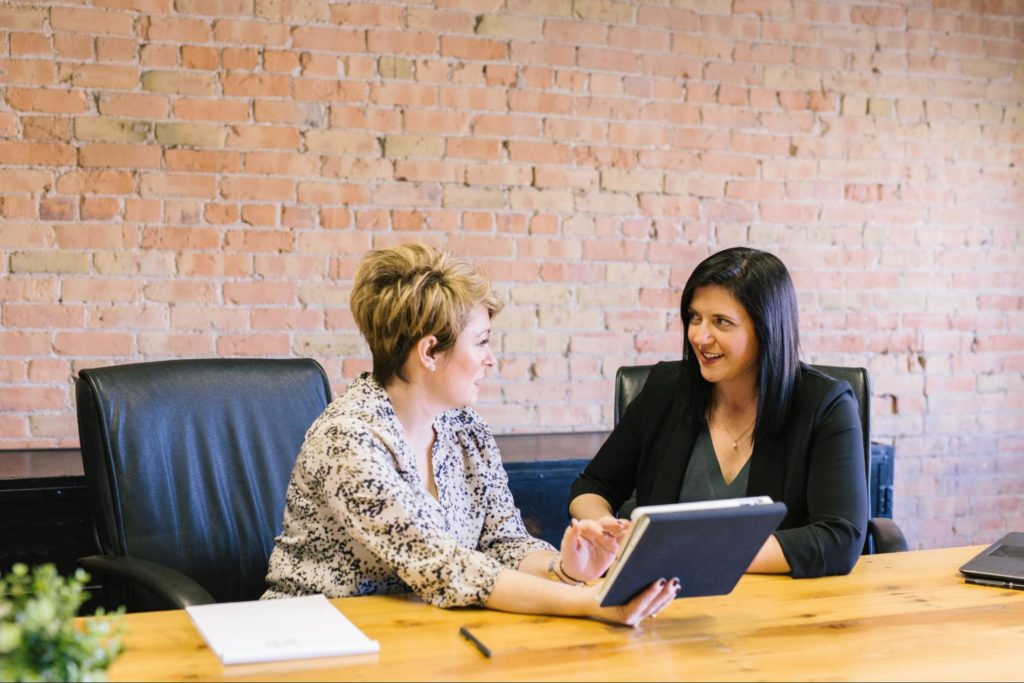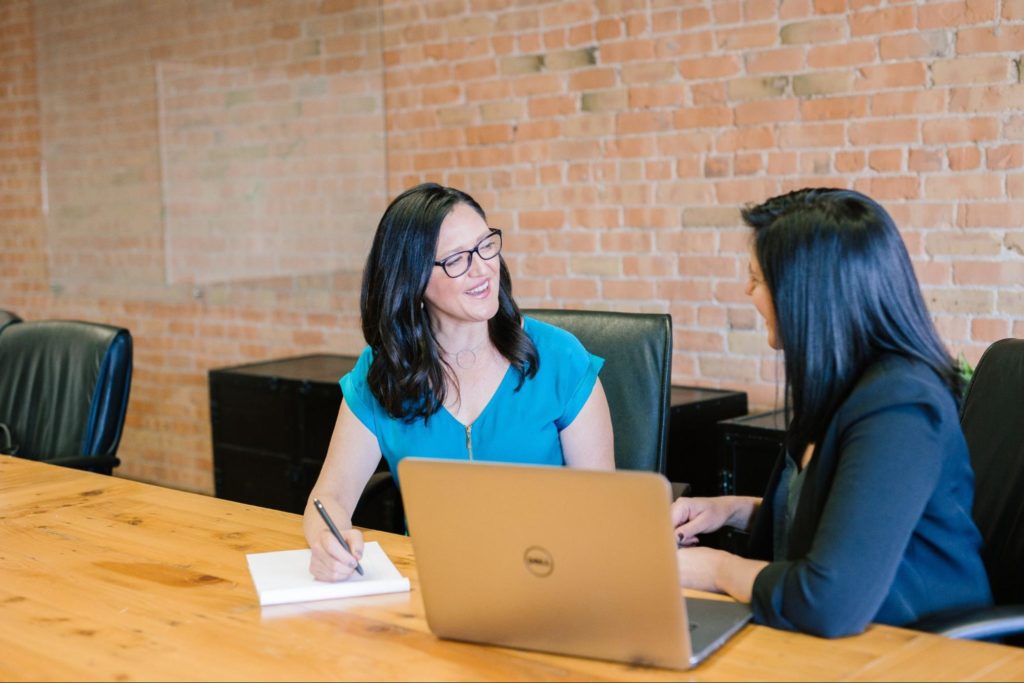At the heart of every user experience design is a strong emphasis on the user’s own perspective. To properly design products and interactions that are helpful for the user, one must understand exactly how the user feels, and what it’s like to be in their shoes.
Unfortunately, users of a system aren’t always prioritized, which is a sure way to have a bad design and terrible results. Some UX interviews aren’t conducted in a detailed way, because interviewers think their mission is to briefly chat with a user or quickly survey them about a new product.
This is a bad way of looking at things, and it doesn’t take a holistic approach to the user experience. To find a solution, one must know every part of the problem. Deeper insight into user experience makes for better design, and most importantly: a happier user.
Above all, it’s important to remember that a user experience interview has nothing to do with asking a user what they want, or what you can give them. It’s about seeing what users are really doing, and what can be improved.
To fully prioritize user experience, it’s important to take utmost care in preparing to conduct a user interview. After all, an interview is an example of a user experience. Let’s go over some strategies for running a successful user experience interview.

Interview Tips & Tricks
1. Prepare a set of specific questions beforehand
Trusty information is sourced through trusty methods. It’s important to prepare questions and prompts in advance and stay consistent with the same questions for every user interview. By doing this, you can get a universal understanding of each user’s experience.
If you don’t prepare and stick to a certain set of questions, you’ll end up asking random questions in a disorganized way. This can lead to users going on tangents, or skewing the data with too much feedback in some areas of interest and not enough in others.
Creating a set of strong, meaningful questions isn’t easy. Good UX interviewers will often try out a variety of questions on a small sample of users. From there, they can select questions that elicited particularly useful information, and ask those to the majority of users.
User interviews are most effective when they are paired with observations of user experience. Interviews should never be done instead of actual testing. In fact, a great way to brainstorm interview questions is to base them on standards and metrics for UX tests.
2. Ask open-ended questions
The best way to get a genuine insight into the user experience is to put users into a position that will actually show you what part of their experience can be improved, and what their objectives are. By asking users yes or no questions, you are trapping them in a dichotomy where they have little room to speak from experience.
Asking questions is about putting users in a position of communicative power. The more they can tell you, the easier your job becomes.
It’s equally important that the interview questions aren’t worded too vaguely, or one also runs the risk of eliciting a brief, inaccurate answer. For example, asking someone “Did you find this helpful?” doesn’t invite new ideas, and can only be measured from the user’s subjective idea of what helpfulness looks like.
3. Keep calm and let a user speak
We get it. Asking a user question that’s followed by a long silence is awkward. But that doesn’t mean you should immediately start talking. It can take time for a user to come up with a valuable answer. If you talk too much or clarify a question excessively, the user will feel pressured to respond with a quick, sudden answer rather than an accurate one.
Awkwardness itself can interfere with the user’s answer, which can compromise the integrity of the interview. To get around this, make sure the user feels comfortable taking their time. You could be sure to take a long time before asking for a response or distract yourself with a task until they can come up with a reply.
Some of the best interview answers come after a long, silent brainstorming session. A user who spends a lot of time thinking about their answer will usually give you much better results than a hasty user.
4. Don’t try to help a user
When reviewing common user experience questions, it’s easy to notice a trend in the UX community: People are apprehensive about letting a user think for themselves. Interviewers will give users hints, or try to produce a certain response from them.
Disappointing or negative responses from a user should not only be accepted but should also be hoped for! UX design works to understand and solve problems that users have. If an interview comes back without any issues or negative experiences reported, you can’t use it to create awesome solutions.
If you’re researching someone else’s product, it’s easy to remain neutral. But it can be hard to listen to a user criticize a product you designed or branding that represents your business. That’s why you need to take utmost care in making sure the user interview is about something that you (or the interviewing party) can be neutral about.
5. Record and take notes

Many times, interviewers question a large number of users. This can lead to vague notes/recordings and very broad observations about user experience. The ideal user interview isn’t a huge focus group, but a deep study, one user at a time.
It’s not impossible to record an interview of multiple users at once, but playing back your findings and turning them into statements will be tricky and time-consuming. While you want to have as many interviews as possible, it’s better to get one great interview than one hundred mediocre ones.
Some users might not like being recorded. Find the ones that do. Audio recordings give the little details that written documents can’t show. The tone, rhythm, and pace of a user in a recording is extremely insightful for understanding their point of view.
Video recording is even better. Being able to capture a user’s facial expressions is priceless, not to mention having the ability to revisit a user’s initial interaction with a product whenever you want.
6. Record your insights immediately after the interview

When you really get to know a user (and their problems) in an intimate setting, you might find yourself having “a-ha” moments and breakthroughs in understanding the user experience. Be sure to list any and every connection, idea, or solution that you think of immediately after the interview process.
The long review of user data after an interview process is dreaded by many. It often involves tedious rereading, running through recordings, looking back at user responses, and drawing conclusions. Going through large amounts of data can prove to be uninspiring, which is why you should make an effort to record big ideas you have as they happen, as quickly as possible.
This is why recording insights is best done right after an interview. It is the earliest available moment to jot down new ideas without taking time or attention away from the user.
7. Convert your recordings to text
User interviews are a very involved process, and it’s not uncommon to end up with hours and hours of recorded interviews. Going through all of that takes time, and it’s best to get everything written down first for future reference.
To save even more time, you can use a speech to text software. It will speed up your ability to study your findings and make ultimate conclusions.
8. Check your notes and make a full analysis
Once you’ve completed the daunting task of note organization, it’s time to analyze your findings to create the next user experience solutions. Here, you should begin asking questions like:
- What did users focus on/complain about the most?
- Where did users seem to have a hard time?
- What are the most important conclusions I can make from the information I’ve gathered?
Remember, the ultimate goal in UX interviews isn’t a bunch of screenshots, bullet points, transcripts, and written notes. It’s about actionable change that can measurably improve user experience. Now is the time to make your data as refined, digestible, and meaningful as possible.
Conclusion
When conducting UX interviews, the most important information to strive for is pure, unobstructed user perspective. By being prepared and concentrated during the interview, you can increase your chances of getting feedback that will make a difference.
Prepare strong questions that allow for great answers, and maintain an environment that’s conducive to a comfortable, honest user. Be tactful and courteous. Give users room to try out products and make discoveries.
Additionally, you should see all user feedback as sacred. Record everything they say, feel, or do as much as you can. Use voice-to-text software to transcribe notes as effectively as possible. Finally, analyze your findings and use them to create solutions that improve user experience.
Where to Learn More
If you’d like to learn more about UX Research in a mentor-led Bootcamp, consider the 12-week, part-time User Research Bootcamp.
You can also consider the following self-paced online courses related to user research:
Happy learning!
